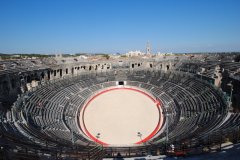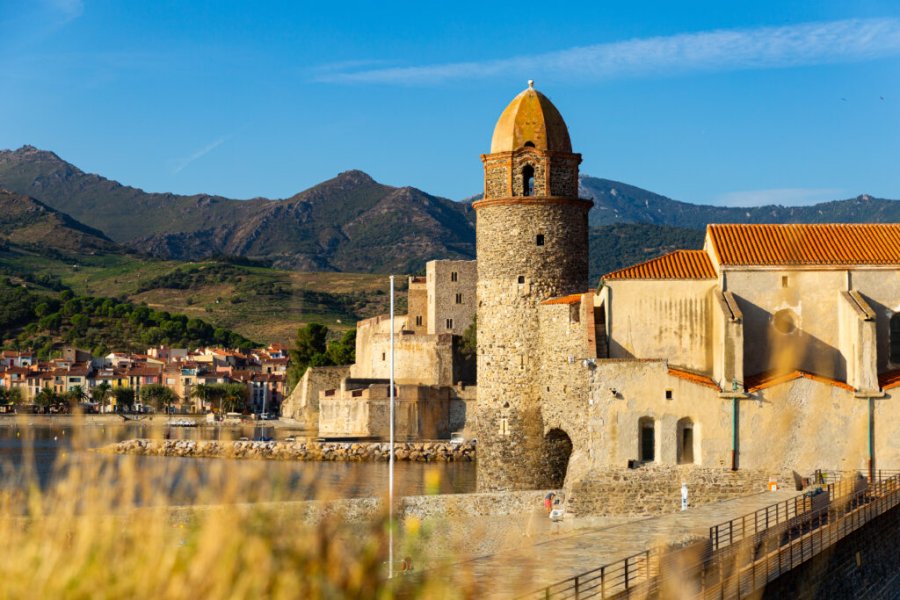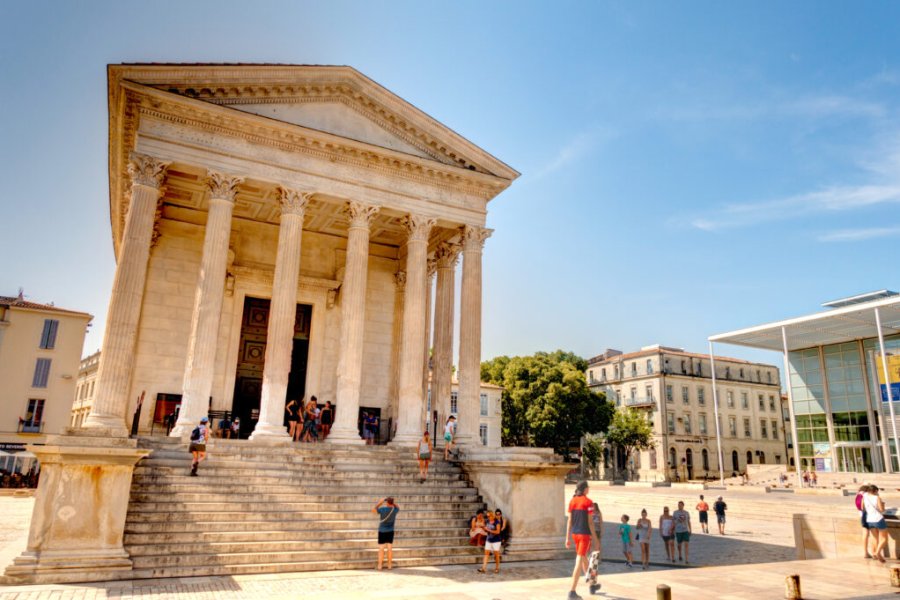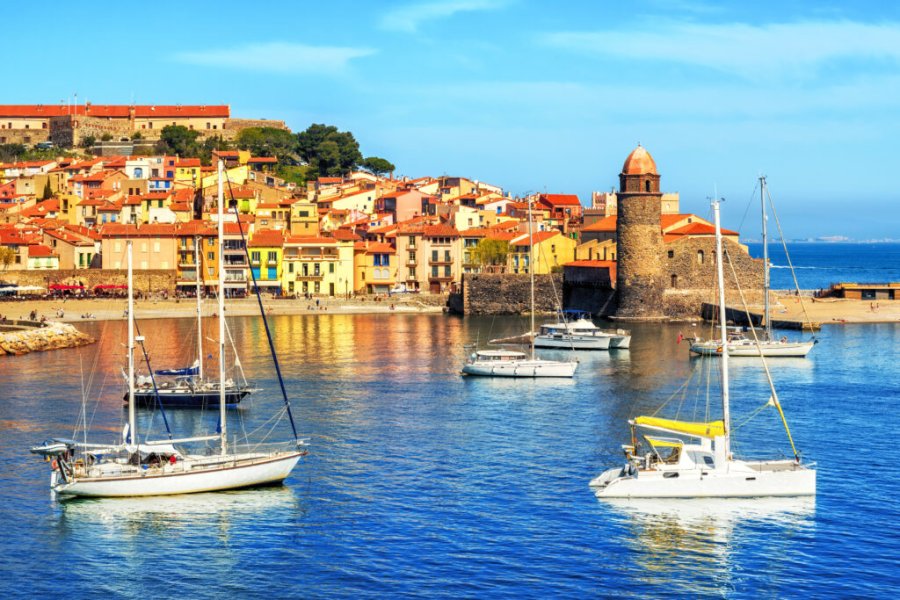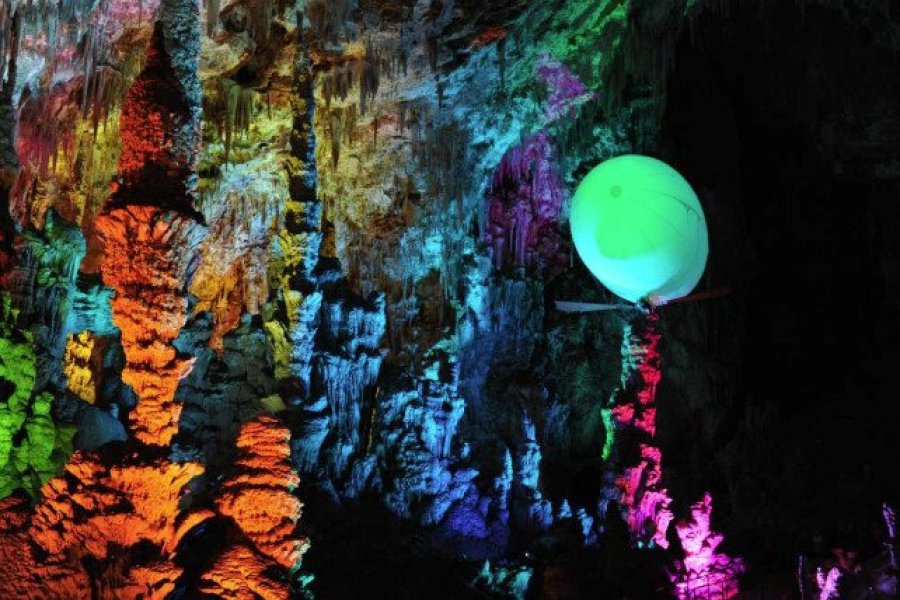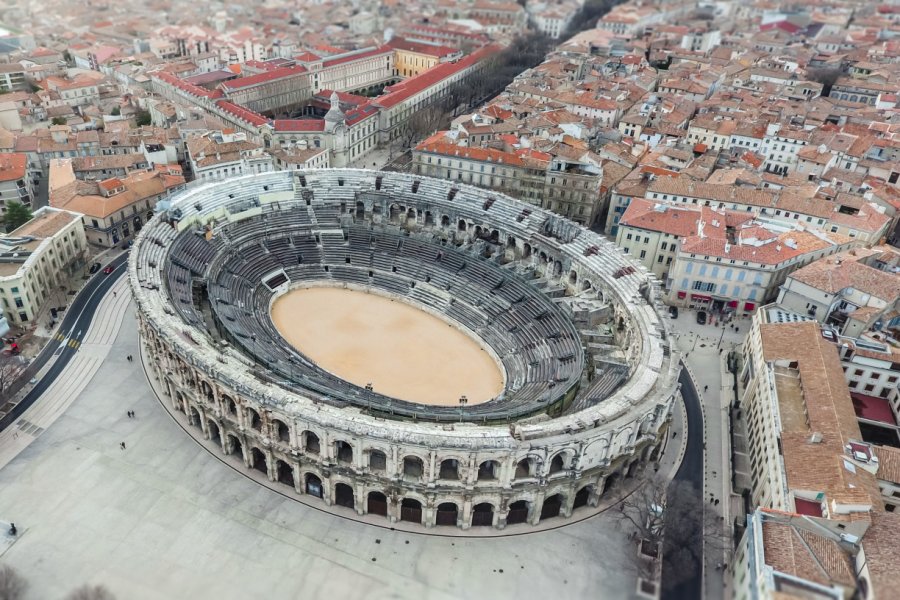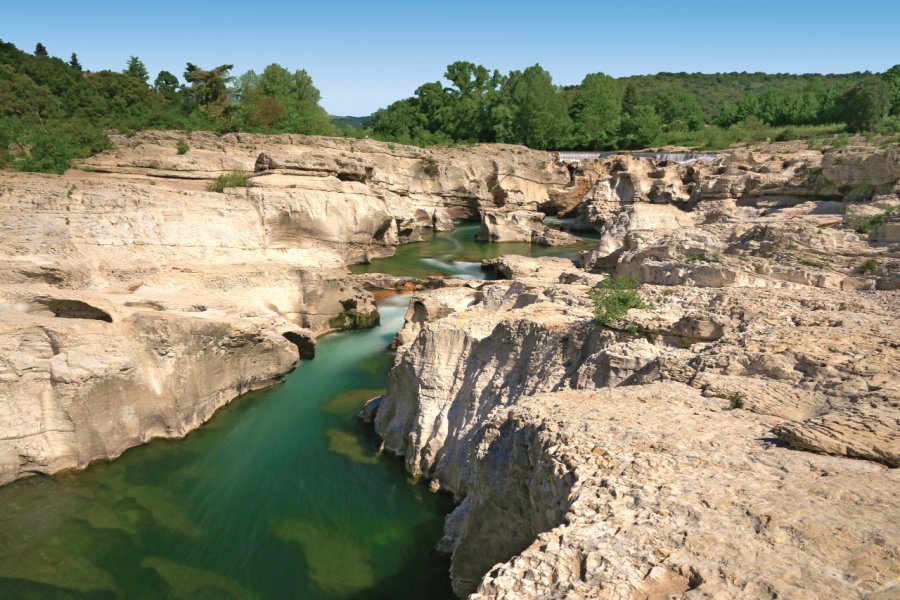Travel guide Nîmes
Situated between the Mediterranean and the Cévennes, between the Camargue and Provence, Nîmes is more than just a Midi metropolis; it's a land rich in the heritage of the past that looks to the future. Over the centuries, the city of Nîmes has preserved remarkable ancient buildings such as the Arènes, the Tour Magne, the Temple de Diane (in the magnificent Jardin de la Fontaine gardens) and the Maison Carrée. It's this topography that makes it the "French Rome" (legend has it that the capital of the Gard region has seven hills, but in reality there are only three).
In the 11th century B.C., Celtic populations began to settle around Mont Cavalier and the surrounding area, while other peoples settled on oppidums in the Nîmes garrigue. On their promontories, the locals worshipped the god Nemausus, associated with the sacred spring around which the town was formed, hence the current name of Nîmes.
Under Emperor Augustus, the city became the symbol of Romanity in Gaul, and to affirm the triumph of the new civilization, it was decided to mint coins in Nîmes.
Today, with its annual férias, bullfights, flamenco festival and Camargue gastronomy, the city is a gateway to southern Spain, Cisalpine Italy and, of course, Occitania. The town with an accent, as it's nicknamed, is the multicultural conjunction of a heritage that is at once Provençal, Cévenol, even Lozère and Ardèche.
A mosaic of cultures can thus be found in the city of Nîmes. The city of Nîmes does its utmost to skilfully combine the conservation and transmission of its unique heritage with the modernity necessary for any contemporary city. The Arènes, an amphitheatre dating back to the 1st century, now faces the Musée de la Romanité, with its modern architecture; more than two thousand years of history face each other and respond harmoniously. Numerous concerts are held in the Arènes during the Festival de Nîmes, adding to the harmonious blend of tradition and modernity. The same is true of the Maison Carrée and the Carré d'art; the ancient edifice stands proudly opposite the futuristic setting that houses the contemporary art museum and the mediatheque. But Nîmes is also a vast pedestrian zone, with narrow streets dating back to the Middle Ages, shops, courtyards and patios. It's a great place to get lost and discover what a crossroads of cultures this city is in Latin Europe.
What to see, what to do Nîmes?
-
Book an activity
-
Customized travel
- Addresses to visit Nîmes
Weather at the moment
Suggested addresses Nîmes
Travel Nîmes
-
Find a hotel
-
Car Rental
-
Find a local agency
Find unique Stay Offers with our Partners
Featured articles Nîmes
Events
Discover Nîmes
Unclassifiable and mysterious, fierce and good-natured, the Gard is a department with a difference, a place on the bangs where time stands still. It offers a wealth of history and landscapes to adventurers and those seeking languor under the southern sun. Plural and diverse, its splendors are as much natural as they are heritage, and the wild character of the territory gives full meaning to the word "discover". It's best to take your time and whet your curiosity, as the many secrets it holds are still being revealed after many years. Seek and you will find in the Gard! Its history has been marked by upheavals, and today it's the many original initiatives that make its present dynamic, while remaining strong in its traditions. From the sea to the mountains and through the ages, you're invited to an encounter as unusual as it is convivial.
Pictures and images Nîmes
The 12 keywords Nîmes
1. # Aïoli
Aïoli looks like mayonnaise, but is not. It's a garlic and olive oil-based sauce widely used in Mediterranean cuisine. It can also be served hot with an assortment of vegetables. Aïoli camarguaise, an essential dish in the Gard region, is a rouille made from octopus and potatoes mixed with aïoli.
2. # Cod brandade

How did a North Sea and Atlantic fish become a Gard speciality?
Brandade de morue is a dish made from dried and salted cod. North Sea and Atlantic fishermen used this technique to preserve the fish. Then, they would come to Nîmes to trade the cod for salt from the Midi salt marshes.
3. # Costières de Nîmes
Aromatic, modern and elegant reds, fresh and delicate whites, fruity and festive rosés... Costières-de-Nîmes wines have in common this southern character which signs their origin. Rising value of the vineyards of the Rhone Valley, they are the reflection of their soil and are today an AOC. To be consumed with moderation.
4. # Crocodile
Crocodiles in the Gard? Yes, the crocodile is the emblem of Nîmes. Its presence is a bit incongruous and would go back to the time of the Romans. After the Egyptian campaign, Augustus' soldiers settled in Nîmes. Their victory was symbolized by a crocodile chained to a palm tree, a symbol that was later used on coins.
5. # Celebrations
Cultural festivals, historical re-enactments, gastronomic feasts: there's no shortage of opportunities to celebrate in the département. Local and large-scale festivities follow one another all year round. Not forgetting the férias in Nîmes and Alès. Whether for or against bullfighting, the féria attracts over a million visitors over five days.
6. # Fougasse
This flatbread is considered to be Provençal but don't be mistaken, it is an institution here!
The Gard distinguishes two types of fougasses: a savory one made of grattons which will divinely accompany the aperitif and a sweet one originating from Aigues-Mortes and which bears its name. The latter was placed, at Christmas, within the thirteen Provençal desserts.
7. # Small Nîmes pâté
This small pâté stuffed with veal and pork, or with brandade, is a specialty of the city. The legend says that it would have been created by grandmothers of Nîmes. In this dough in the shape of a cork, they put the remains of gardiane or other to taste it with the aperitif. Its notoriety has now exceeded the borders of the department.
8. # Picholine

Listed as part of France's intangible heritage, these typically Gardoise olives are one of the region's gustatory treasures. With a particularly fruity taste and slightly peppery notes, their flavor is matched only by the brightness of their green. They give birth to an oil that is both bitter and pungent, with great nutritional value.
9. # Romanity

In the department, it is not really our ancestors the Gauls but rather our ancestors the Romans! Indeed, the Roman settlers did not only bequeath some of the most grandiose monuments, such as the Pont du Gard, the arena of Nîmes or the Maison carrée, they also transmitted to the people of Gard a way of life and an open vision of the world.
10. # Salt of Camargue
This is a unique salt with naturally white, slightly moist crystals. It is harvested once a year in late summer from the Aigues-Mortes salt marsh. This exceptional, additive-free natural salt has been hand-picked since Antiquity. It's the perfect seasoning to enhance any dish: it's used as much as olive oil!
11. # Nature

The landscapes of the Gard region rival each other in their beauty and diversity, from the beaches of the Camargue to the ancient mountains of the Cévennes National Park and the fragrant garrigues. Here, wildlife finds a preserved and free habitat. The Gard is the perfect place to get to know nature through gentle walks and outdoor sports.
12. # Truffle
No, you're not dreaming, the Gard is also truffle country. Truffles have been found in the limestone soils of Uzège since Roman times. Uzès has the privilege of being labelled a "Remarkable Taste Site". An exceptional distinction, since there are only three in the whole of France. Its annual market is very popular with connoisseurs.
You are from here, if...
You get cold whenever it's below 20°C and you're proud to be on the weather map.
All your salads, indeed all your meals, are topped with olive oil.
You've been lucky enough to play a gladiator in the arena at Nîmes.
You understand Occitan AND Provençal.
In your youth, you fancied yourself an adventurer, canoeing the Gardon gorges and the Collias waterfalls.
You must have avoided at least one wild boar while driving at night.
For you, the North is above the town of Orange.
You've already taken a little bath at night, a little tipsy, in the fountain on Place aux Herbes in Nîmes.
Within a5 km radius of your home, there is at least one vestige - menhir, dolmen, inscription, ruin, monument - dating back two thousand years or more.
Meals that last for hours are necessarily punctuated by a little siesta to the sound of cicadas.
For you, summer lasts ten months of the year.

